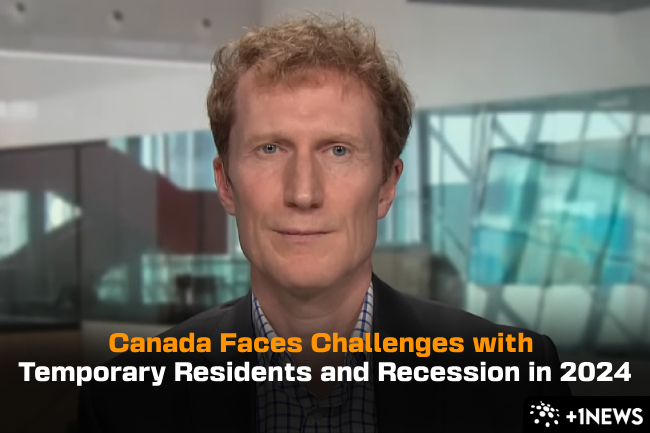Canada is dealing with challenges related to temporary residents and a possible recession in 2024. Immigration Minister Marc Miller is reviewing the entry of international students and other non-permanent residents, considering concerns about the connection between the housing crisis and immigration.
Jump to:
Housing Affordability and Political Response
“The relationship between housing and immigration is complex, and it was considered around the cabinet table when setting annual targets for the number of people entering the country,”
Miller said in an interview on January 14 on Rosemary Barton Live.
“Housing has and continues to be a concern, especially in a post-COVID scenario with rising interest rates, supply challenges, and affordability issues,” Miller told CBC chief political correspondent Rosemary Barton.
He clarified that immigrants aren’t responsible for the interest rate increase, but the sheer number of people entering the country needs scrutiny.
“It isn’t immigrants that raised interest rates, but volume is volume and it’s something that we need to look at,” Miller said, emphasizing the need to address the sheer number of people entering the country.
“The challenge with the non-permanent resident targets is that there are none,” Miller added, explaining that restricting temporary workers might have major economic consequences. “We have to take a look at that and rein it in in many areas, but we need to be clear about what that means, exactly.”
The housing affordability problem has led to political debates, with the Conservative opposition linking government deficits to rising interest rates. They propose cutting waste and capping spending to balance the budget and tying infrastructure funding to the number of homes cities allow to be built.
“My common-sense plan is to cut waste and cap spending to balance the budget so we can have more affordable interest rates,” Conservative Leader Pierre Poilievre said at an event in Thunder Bay, Ontario, on Friday.
Surveys show a shift in Canadians’ views, with many believing that increased immigration worsens the housing crisis and strains the healthcare system.
Temporary Residents Under Scrutiny
In November, the IRCC announced a goal of 500,000 new permanent residents by 2026, but there are no specific targets for temporary residents.
Miller expressed concerns about non-permanent resident targets and suggested modifying postgraduate work permits or controlling the volume of temporary residents.
“I think the challenge with the non-permanent resident targets is that there are none,” he said, adding that restricting temporary workers might have major economic consequences. “We have to take a look at that and rein it in in many areas, but we need to be clear about what that means, exactly.”
Miller emphasized the federal government’s intent to intervene in a housing market where some actors prioritize short-term gains over long-term stability. He called on provinces to cooperate, warning that the federal government is ready to act if needed.
Blocking Temporary Residents Could Worsen Recession
While Canada’s population has grown due to foreign workers and international students, banning non-permanent or temporary residents could deepen the expected recession in 2024, according to Desjardins’ research.
If the government reduces non-permanent resident admissions to zero, it could lead to a 0.7% drop in real GDP in 2024 and impede the recovery.
“As such, caution is warranted on the part of policymakers to minimize the economic downside of slowing newcomer arrivals too quickly,” Randall Bartlett, senior director of Canadian economics at Desjardins, wrote in his paper.
The analysis suggests policymakers should exercise caution to minimize the economic downsides of slowing newcomer arrivals too quickly.
If Canada doubled its NRP admissions from its present rate, Bartlett believes the GDP might increase by 1% this year and much more in the coming years.
The paper states that “sustained high levels of NPR admissions” may strain home affordability and raise inflation, affecting interest rates.














